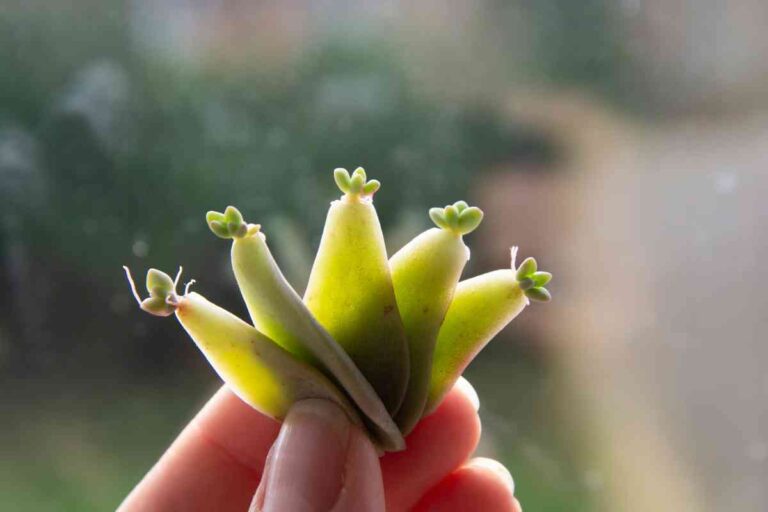Red Cascade Climbing Rose: Characteristics and Care Tips
Overview of Red Cascade Climbing Rose
Red Cascade Climbing Rose, also known as Rosa ‘Red Cascade’, is a popular miniature climbing rose cultivar that belongs to the Rosaceae family. It was first introduced in 1976 and has since gained popularity among gardeners due to its stunning bright red blooms and vigorous growth habit.
As the name suggests, Red Cascade is a climbing rose that can grow up to 10 feet tall and 6 feet wide. It produces clusters of small, double, bright red flowers that bloom in the spring and summer. The foliage is dark green and glossy, providing an attractive backdrop to the vibrant blooms.
Red Cascade is a hardy plant that is easy to grow and maintain. It thrives in full sun to partial shade and prefers well-draining soil. It is also disease-resistant, making it a popular choice for gardeners who want a low-maintenance plant.
| Entity | Information |
|---|---|
| Common Name | Red Cascade Climbing Rose |
| Scientific Name | Rosa ‘Red Cascade’ |
| Family | Rosaceae |
| Year of Introduction | 1976 |
One of the unique features of Red Cascade is its ability to bloom repeatedly throughout the growing season. This makes it an excellent choice for gardeners who want a plant that will provide continuous color in their garden.
Overall, Red Cascade Climbing Rose is a beautiful and hardy plant that is easy to grow and maintain. Its stunning red blooms and vigorous growth habit make it a popular choice among gardeners looking for a climbing rose that will provide continuous color in their garden.
Characteristics
Physical Attributes
The Red Cascade climbing rose is a miniature rose with a vigorous growth habit. It can reach a height of 6-8 feet and has dark green, glossy foliage. The plant produces double flowers that are dark red in color, and the blooms are fragrant.
| Attribute | Description |
|---|---|
| Height | 6-8 feet |
| Foliage | Dark green, glossy |
| Blooms | Double flowers |
| Color | Dark red |
| Fragrance | Fragrant |
Color and Fragrance
The Red Cascade climbing rose is known for its beautiful dark red color. The blooms are double flowers that are fragrant. The fragrance is described as sweet and spicy, with a hint of citrus.
Growth Habit
The Red Cascade climbing rose has a vigorous growth habit and is known for its ability to climb. It is a hardy plant that can withstand cold temperatures, making it a popular choice for gardeners in colder climates. The plant blooms profusely throughout the growing season.
In summary, the Red Cascade climbing rose is a miniature rose with a vigorous growth habit that produces double flowers that are dark red in color and fragrant. The plant has dark green, glossy foliage and can reach a height of 6-8 feet. It is a hardy plant that can withstand cold temperatures and is known for its ability to climb.
Cultivation and Care
Planting Requirements
Red Cascade climbing roses require full sun to thrive and produce abundant blooms. They are hardy in USDA zones 6-9 and can be grown in containers or in the ground. When planting, make sure to choose a location with good air circulation to prevent disease and pest problems.
Spacing is important when planting Red Cascade climbing roses. Plant them 4-6 feet apart to allow for adequate air flow and growth. They prefer well-drained soil with a pH range of 6.0-6.5. Water regularly, but do not overwater as this can lead to root rot.
Pruning and Maintenance
Pruning is essential for the health and appearance of Red Cascade climbing roses. Prune in late winter or early spring before new growth appears. Remove any dead, diseased, or crossing branches. Cut back the remaining canes to encourage new growth and blooming.
Regular maintenance is important for the health of Red Cascade climbing roses. Provide adequate water and fertilization throughout the growing season. Mulch around the base of the plant to retain moisture and suppress weeds.
Disease and Pest Management
Red Cascade climbing roses are susceptible to several diseases and pests, including black spot, rust, powdery mildew, aphids, borers, scale, thrips, leafhoppers, and spider mites. Cultural practices such as proper pruning, watering, and fertilization can help prevent disease and pest problems.
If disease or pest problems do arise, prompt action is necessary. Treat with an appropriate fungicide or insecticide according to the manufacturer’s instructions. Remove and dispose of any infected plant material to prevent further spread of disease.
| Disease/Pest | Symptoms | Treatment |
|---|---|---|
| Black Spot | Black spots on leaves | Fungicide |
| Rust | Orange spots on leaves | Fungicide |
| Powdery Mildew | White powdery growth on leaves | Fungicide |
| Aphids | Small, green insects on leaves | Insecticide |
| Borers | Holes in stems | Insecticide |
| Scale | Small, brown insects on leaves | Insecticide |
| Thrips | Small, black insects on leaves | Insecticide |
| Leafhoppers | Yellowing leaves with brown spots | Insecticide |
| Spider Mites | Fine webbing on leaves | Insecticide |
Uses in Landscaping
The Red Cascade Climbing Rose is a versatile plant that can be used in a variety of landscaping applications. Its cascading growth habit makes it an excellent choice for vertical structures such as fences, pergolas, and pillars. It can also be grown in containers or trained to grow as a ground cover.
Versatile Applications
The Red Cascade Climbing Rose is a versatile plant that can be used in a variety of landscaping applications. It is a great choice for adding color and texture to your garden, and it can be used as a climber or ground cover.
This rose grows to a height of 8-10 feet and spreads to a width of 4-5 feet. It blooms in the late spring and early summer, producing clusters of bright red flowers that are 2-3 inches in diameter.
Erosion Control
The Red Cascade Climbing Rose is an excellent choice for erosion control. Its spreading growth habit and deep root system help to stabilize the soil and prevent erosion.
When used as a ground cover, this rose can be planted on slopes to prevent soil erosion. It can also be used to cover areas where other plants have failed to grow.
Ground Cover
The Red Cascade Climbing Rose can be trained to grow as a ground cover, making it an excellent choice for filling in large areas of the garden. When used as a ground cover, this rose can help to suppress weeds and retain moisture in the soil.
| Feature | Details |
|---|---|
| Height | 8-10 feet |
| Width | 4-5 feet |
| Bloom Time | Late spring to early summer |
| Flower Color | Bright red |
| Growth Habit | Cascading |
| Uses | Climber, ground cover, erosion control |
In conclusion, the Red Cascade Climbing Rose is a versatile plant that can be used in a variety of landscaping applications. Its cascading growth habit, bright red flowers, and ability to grow as a ground cover make it a great choice for adding color and texture to your garden.
Geographical Distribution
Red Cascade Climbing Rose is a popular ornamental plant that is widely grown in many regions of the world. In this section, we will discuss the geographical distribution of the plant, its popularity in different regions, and its USDA hardiness zones.
Popularity in Different Regions
Red Cascade Climbing Rose is a popular plant in many regions of the world. It is widely grown in the United States, Canada, Europe, and Asia. In the United States, it is popular in California, Hawaii, and Alaska. In California, it is grown in many areas, including Los Angeles, San Francisco, and San Diego. In Hawaii, it is grown in many areas, including Honolulu and Maui. In Alaska, it is grown in Anchorage and other areas.
USDA Hardiness Zones
The USDA Hardiness Zones for Red Cascade Climbing Rose are 6 to 9. This means that the plant can tolerate temperatures as low as -10°F to 20°F. The plant is not suitable for areas with extreme cold temperatures.
The following table shows the USDA Hardiness Zones for Red Cascade Climbing Rose in different regions of the United States:
| Region | USDA Hardiness Zones |
|---|---|
| California | 6-9 |
| Hawaii | 10-11 |
| Alaska | 4-6 |
In summary, Red Cascade Climbing Rose is a popular ornamental plant that is widely grown in many regions of the world. Its popularity varies by region, and it is most commonly grown in California, Hawaii, and Alaska. The plant is suitable for USDA Hardiness Zones 6 to 9, and it is not suitable for areas with extreme cold temperatures.
Purchasing and Ordering
If you’re interested in adding a Red Cascade Climbing Rose to your garden, there are a few things you should know about purchasing and ordering.
Where to Buy
You can purchase Red Cascade Climbing Rose from various nurseries and garden centers. You can also order them online from reputable online retailers. It’s important to make sure that you’re purchasing from a reputable source to ensure the quality of the plant.
Ordering Online
Ordering online can be a convenient way to purchase Red Cascade Climbing Rose. When ordering online, make sure to check the shipping and handling costs, as well as the estimated delivery time. Some online retailers offer free shipping for orders over a certain amount.
Here are some popular online retailers where you can order Red Cascade Climbing Rose:
| Retailer | Price Range | Shipping |
|---|---|---|
| Amazon | $20-$50 | Free for Prime members |
| Jackson & Perkins | $30-$40 | Shipping fees vary by location |
| Nature Hills Nursery | $25-$30 | Shipping fees vary by location |
Ordering by Mail
If you prefer to order by mail, you can do so by contacting a reputable nursery or garden center. You can often find mail-order catalogs from these sources that offer a variety of plants, including Red Cascade Climbing Rose.
When ordering by mail, make sure to check the delivery time and shipping costs. Some nurseries and garden centers offer free shipping for orders over a certain amount.
Conclusion
Purchasing and ordering Red Cascade Climbing Rose can be a simple process as long as you know where to look and what to expect. Whether you choose to order online or by mail, make sure to purchase from a reputable source to ensure the quality of the plant.
Recommended Reading:
- Hibiscus coccineus – Scarlet Rosemallow
- Cathy Rust Chrysanthemum – a variety of Chrysanthemum
- Dormant Plumeria – a variety of Frangipani
- Red Cascade Climbing Rose – a variety of Rose
- Naranjilla plant – Solanum quitoense, also known as Lulo
- Wild Jasmine plant
- Rosa rugosa ‘Therese Bugnet’ – a variety of Rugosa Rose
- Amethyst Falls Wisteria in bud – a variety of Wisteria
- Nicotiana langsdorffii – Green-flowered Tobacco
- Colchicum-speciosum – Autumn Crocus
Frequently Asked Questions
Where can I purchase Red Cascade climbing rose?
Red Cascade climbing rose can be purchased from various online plant nurseries, as well as from local garden centers and nurseries. Some popular online plant nurseries that carry Red Cascade climbing rose include Jackson & Perkins, David Austin Roses, and Nature Hills Nursery.
What is the price range for Red Cascade climbing rose?
The price of Red Cascade climbing rose can vary depending on the size of the plant, the nursery or garden center where it is purchased, and the region in which it is being sold. Generally, a small Red Cascade climbing rose plant can be purchased for around $20, while larger plants can range from $50 to $100 or more.
Are there any Red Cascade climbing rose plants for sale near me?
To find out if there are any Red Cascade climbing rose plants for sale near you, it is best to check with your local garden centers and nurseries. You can also search online for plant nurseries in your area that carry Red Cascade climbing rose.
What are the care requirements for Red Cascade climbing rose?
Red Cascade climbing rose requires full sun to partial shade and well-draining soil. It should be watered deeply once a week, or more frequently during hot, dry weather. Pruning should be done in late winter or early spring, before new growth begins. Red Cascade climbing rose is generally disease-resistant, but it is still important to monitor the plant for any signs of disease or pests.
How tall does a Red Cascade rose typically grow?
Red Cascade climbing rose can grow up to 10 feet tall and 6 feet wide. However, with proper pruning and training, it can be kept to a smaller size.
What are some tips for caring for climbing roses?
Some tips for caring for climbing roses include providing them with a sturdy support structure, such as a trellis or fence, to climb on; pruning them regularly to promote healthy growth and flowering; and fertilizing them with a balanced fertilizer in the spring and summer. It is also important to monitor the plant for any signs of disease or pests and to address any issues promptly.
| Care Requirements | Description |
|---|---|
| Sun Exposure | Full sun to partial shade |
| Soil | Well-draining |
| Watering | Deep watering once a week |
| Pruning | Late winter or early spring |
| Disease Resistance | Generally disease-resistant |
| Support Structure | Sturdy trellis or fence |
| Fertilizing | Balanced fertilizer in spring and summer |
Red Cascade climbing rose can be purchased from various online plant nurseries, as well as from local garden centers and nurseries. Some popular online plant nurseries that carry Red Cascade climbing rose include Jackson & Perkins, David Austin Roses, and Nature Hills Nursery.
“}},{“@type”:”Question”,”name”:”What is the price range for Red Cascade climbing rose?”,”acceptedAnswer”:{“@type”:”Answer”,”text”:”
The price of Red Cascade climbing rose can vary depending on the size of the plant, the nursery or garden center where it is purchased, and the region in which it is being sold. Generally, a small Red Cascade climbing rose plant can be purchased for around $20, while larger plants can range from $50 to $100 or more.
“}},{“@type”:”Question”,”name”:”Are there any Red Cascade climbing rose plants for sale near me?”,”acceptedAnswer”:{“@type”:”Answer”,”text”:”
To find out if there are any Red Cascade climbing rose plants for sale near you, it is best to check with your local garden centers and nurseries. You can also search online for plant nurseries in your area that carry Red Cascade climbing rose.
“}},{“@type”:”Question”,”name”:”What are the care requirements for Red Cascade climbing rose?”,”acceptedAnswer”:{“@type”:”Answer”,”text”:”
Red Cascade climbing rose requires full sun to partial shade and well-draining soil. It should be watered deeply once a week, or more frequently during hot, dry weather. Pruning should be done in late winter or early spring, before new growth begins. Red Cascade climbing rose is generally disease-resistant, but it is still important to monitor the plant for any signs of disease or pests.
“}},{“@type”:”Question”,”name”:”How tall does a Red Cascade rose typically grow?”,”acceptedAnswer”:{“@type”:”Answer”,”text”:”
Red Cascade climbing rose can grow up to 10 feet tall and 6 feet wide. However, with proper pruning and training, it can be kept to a smaller size.
“}},{“@type”:”Question”,”name”:”What are some tips for caring for climbing roses?”,”acceptedAnswer”:{“@type”:”Answer”,”text”:”
Some tips for caring for climbing roses include providing them with a sturdy support structure, such as a trellis or fence, to climb on; pruning them regularly to promote healthy growth and flowering; and fertilizing them with a balanced fertilizer in the spring and summer. It is also important to monitor the plant for any signs of disease or pests and to address any issues promptly.
\n
\n\n
\n
\n
\n
\n
\n
\n\n
\n
\n
\n
\n
\n
\n
\n
\n
\n
\n
\n
\n
\n
\n
\n
\n
\n
\n
\n
\n
\n
\n
\n
\n
\n
\n
\n
\n
| Care Requirements | Description |
|---|---|
| Sun Exposure | Full sun to partial shade |
| Soil | Well-draining |
| Watering | Deep watering once a week |
| Pruning | Late winter or early spring |
| Disease Resistance | Generally disease-resistant |
| Support Structure | Sturdy trellis or fence |
| Fertilizing | Balanced fertilizer in spring and summer |
“}}]}




